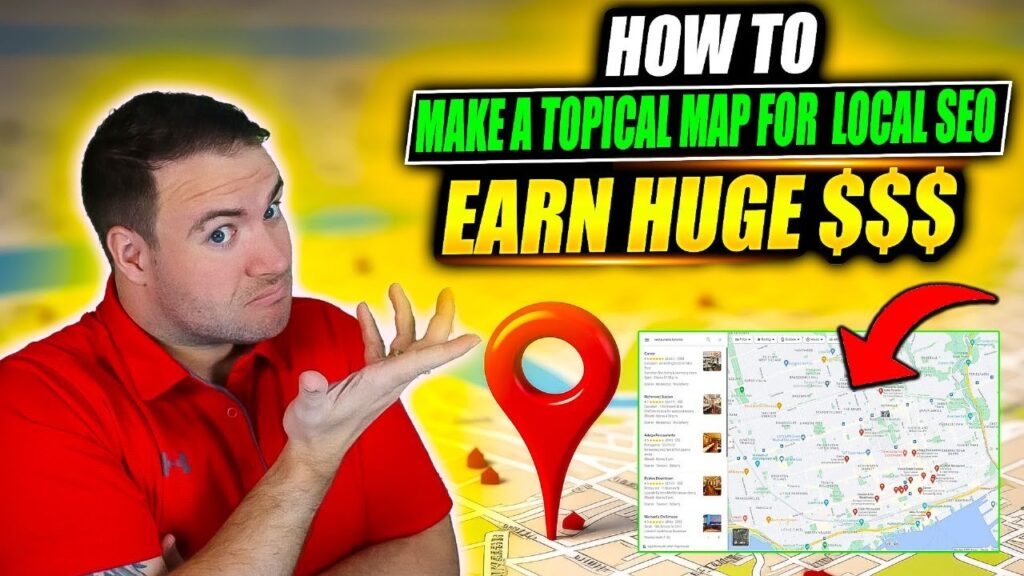Have you ever felt overwhelmed by the intricacies of local SEO? I certainly have! A few years back, my journey took an unexpected turn when I stumbled upon topical maps – a game-changer for local businesses. Today, I’m going to share with you the secrets on how to create a topical map for local SEO that has been a cornerstone of my business success.
TL;DR: Learn how to create an effective topical map for local SEO, using tree removal as a real-world example, complete with AI prompts, keyword strategies, and linking structures to boost your online presence.
Table of Contents
Understanding Topical Maps In Local SEO
When it comes to local SEO, have you ever considered how well you cover a topic? Let’s dive into what a topical map is and why it matters.
What Is A Topical Map In SEO
In simple terms, a topical map is a tool we use to organize information about a specific subject - think of it as your roadmap to SEO success. It’s all about connecting the dots within a topic.
So, what does this look like in practice? For instance, if we focus on “tree removal,” a topical map will cover everything related to that topic. This includes:
- Tree removal for different types of trees like palms or oaks.
- Specific services like stump grinding.
- Geographic areas such as “tree removal Miami” or “tree removal Fort Lauderdale.”
Essentially, we are compiling a comprehensive view of the subject, which is crucial in today’s SEO game.
Why Cover Topics Comprehensively
Now, we need to address the importance of comprehensiveness. Why is it so vital? Think about it: search engines like Google are looking for quality. They want to provide users with the most relevant and informative answers. If your content lacks depth, you're likely to be overlooked.
Covering a topic thoroughly means:
- Better keyword targeting.
- Increased authority on that subject.
- A higher chance of appearing in search results.
By mapping out your topic in detail, you set yourself up as an expert. Do you want to be known as a jack-of-all-trades or a master of one? I know which one I’d choose.
How Do Topical Maps Differ From Traditional SEO Strategies
Let’s switch gears a bit. Traditional SEO often focuses on optimizing individual pages for specific keywords. While this approach has its merits, it can sometimes lead to fragmented content. In contrast, topical maps emphasize a holistic view of your subject.
Instead of isolating keywords, we connect them. Why is this beneficial? Because it creates a network of related information that search engines love! By organizing content into silos, we facilitate better internal linking, which strengthens our overall strategy.
Picture it this way: if your website is a tree, then your topical map is the root system. The stronger and deeper the roots, the taller your tree can grow.
Real-World Application: The Case Of 'Tree Removal'
Let’s bring this down to earth with an example. Imagine you’re running a tree removal service in Miami. What would a topical map look like for this scenario?
- Main Topic: Tree Removal
- Subtopics:
- Types of Trees: Palm trees, ferns, oaks.
- Services: Stump grinding, emergency tree removal.
- Geographic Focus:
- Tree removal Miami.
- Tree removal Fort Lauderdale.
- Supportive Content: Blog posts about tree care, best practices for tree trimming, seasonal tree removal tips.
By structuring your website like this, the internal linking between these subtopics and supportive posts enhances your site’s authority on tree removal in that area. Each piece of content serves a purpose and beckons potential customers to explore more.
Have you noticed the difference a topical approach can make? I can assure you, the results can be remarkable.
The Craft Of Building Your Topical Map
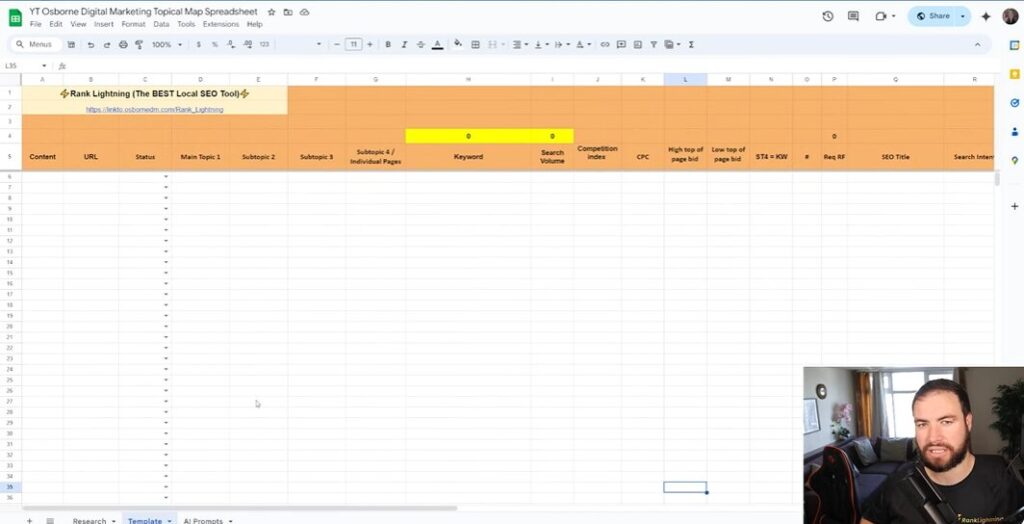
Creating a topical map can feel overwhelming at first. But I assure you, it’s a powerful tool for boosting your local SEO. I’ve been using this technique for a while, and it’s been very effective in achieving consistent success - for me, about ninety percent of the time! Here’s a simple step-by-step guide to get you started.
Step 1: Define Your Main Topic
First off, we need to identify our primary subject. For instance, let’s focus on tree removal. This is not just any tree removal; it’s a local service. We’re talking about areas like Miami or Fort Lauderdale. Understanding your core topic is essential because everything else will revolve around it.
Step 2: Identify Subtopics
Once we have our main topic, it's time to find relevant subtopics. Consider different angles or aspects of tree removal. Some ideas might include:
- Tree removal for certain species (like palm trees)
- Seasonal tree care and maintenance
- Specific location services (like "tree removal in Miami")
- Cost and pricing considerations for tree services
These subtopics help flesh out the broader subject and demonstrate expertise. Think of your main topic as a tree itself, with its branches representing subtopics.
Step 3: Research And Use AI Prompts
This is where we can leverage technology for efficiency. AI tools can generate content ideas and questions related to tree removal. For instance, I often use prompts to uncover what potential customers might ask:
“What are the signs that my tree needs removal?”
Using AI to create these prompts saves time. Plus, you’re tapping into actual queries people are searching for. Why guess when you can know?
Step 4: Structure Your Topical Map
Now that we have our main topic and subtopics, it's time to organize them hierarchically. Start with your primary subject at the top: tree removal.
Next, layer on location-based pages. For example, the next tier might be “tree removal Miami” or “tree removal Fort Lauderdale.” Support these with blog posts that cover related topics. This structure allows search engines to see the relationship between them, which can enhance your authority.
Step 5: Create Content And Internal Links
Content creation is crucial. I'll often write several blogs that support the main topic and those specific services. Utilizing good internal linking strategies allows your content to interconnect effectively. Think about how you'd structure a web of conversations about tree removal.
Remember: It's not enough to have just location and service pages. You need engaging, valuable content that enhances the topic. The better the content, the higher the chance of ranking well in search results.
Example: Topics For Tree Removal In Miami
Let’s get practical. Here’s an example of a topical map for Miami tree removal:
- Main Topic: Tree Removal
- Subtopic 1: Tree Removal Services
- Subtopic 2: Tree Maintenance Tips
- Subtopic 3: Cost for Tree Removal in Miami
- Subtopic 4: Emergency Tree Removal Services
This structure provides a clear path for content generation and ensures that visitors can navigate through topics easily.
Building a topical map may seem like a lengthy process at the start, but the results speak for themselves. A well-organized topical map can establish your site as the authority on a subject, especially in local SEO.
So, let’s get started on your journey to SEO success!
Keyword Research: Understanding The Topic Of Each Keyword

When diving into local SEO, one of the most important tasks is conducting keyword research. As I jump into this, I think about what my audience is looking for. What terms are they using? This is particularly critical for local businesses. For instance, if you're in Miami and want to do tree removal, the keywords you select can significantly impact your online presence. Let's break down the essentials of this process.
Using Tools For Keyword Research In Local SEO
First off, let’s talk about tools. There are many options available, from free ones like Google Keyword Planner to advanced paid tools like Ahrefs or SEMrush. Why are these tools crucial? They help us discover what people are actually searching for in our area. For example, you might think that “tree removal” is your only keyword. But when I’ve analyzed data, I find that terms like “emergency tree removal Miami” or “affordable tree services in Miami” could be far more beneficial for attracting local customers.
- Google Keyword Planner: This can help you find a range of keywords along with their search volumes.
- Ahrefs: Great for competitor analysis and discovering keyword gaps.
- Ubersuggest: Offers keyword suggestions and SEO difficulty metrics.
Assessing Keyword Volume And Competition
After discovering potential keywords, the next step is assessing their volume and competition. Here’s where we separate the wheat from the chaff. High-volume keywords are great, but if they're too competitive, you might struggle to rank. It’s like trying to compete in a race against Usain Bolt. Who stands a chance? Instead, I usually look for keywords that have decent volume but lower to moderate competition. These are often easier to rank for.
Imagine this scenario: you find a keyword like “tree removal services for palm trees Miami.” It may not have thousands of searches, but if the competition is low, you stand a chance of ranking quickly. Using tools like Google Trends can show you how interest in a keyword changes over time. This is valuable information, especially if you’re trying to capitalize on seasonal trends.
Incorporating Long-Tail Keywords And Geographic Targeting
Another vital tactic in your keyword research journey is incorporating long-tail keywords. Long-tail keywords are phrases typically three or more words long. They are more specific, and often, they attract customers who have a clear intent. For example, someone searching for “cheap tree removal in Coral Gables” is likely ready to hire a service, unlike those who only search for “tree removal.” This specificity can lead to higher conversion rates.
Similarly, geographic targeting is a must for local SEO. Think about your ideal customer. Are they local? Then incorporate geographic terms into your keywords. I often advise people to make a list of specific neighborhoods or landmarks around their business location. For example:
- Tree removal Miami
- Tree services Coral Gables
- Emergency tree removal Florida
By using these geographic identifiers, you signal to search engines that your business is relevant to local queries.
Example: Tree Removal Keywords Related To Miami
To help visualize this, let's look at an example related to tree removal keywords in Miami:
- Tree removal Miami
- Affordable tree trimming Miami
- Best tree care services in Miami
- Emergency tree removal Miami
- Miami palm tree removal services
These specific keywords not only convey the services offered but also target the right geographical area. Why does this matter? Because customers look for local businesses, and when they find yours, they are more likely to consider reaching out. When I created my topical map, targeting relevant keywords led to remarkable visibility for my SEO efforts.
While this process might seem daunting at first, remember it’s about gradual growth. With each search query, we’re one step closer to understanding our audience and meeting their needs.
Creating The Content Structure
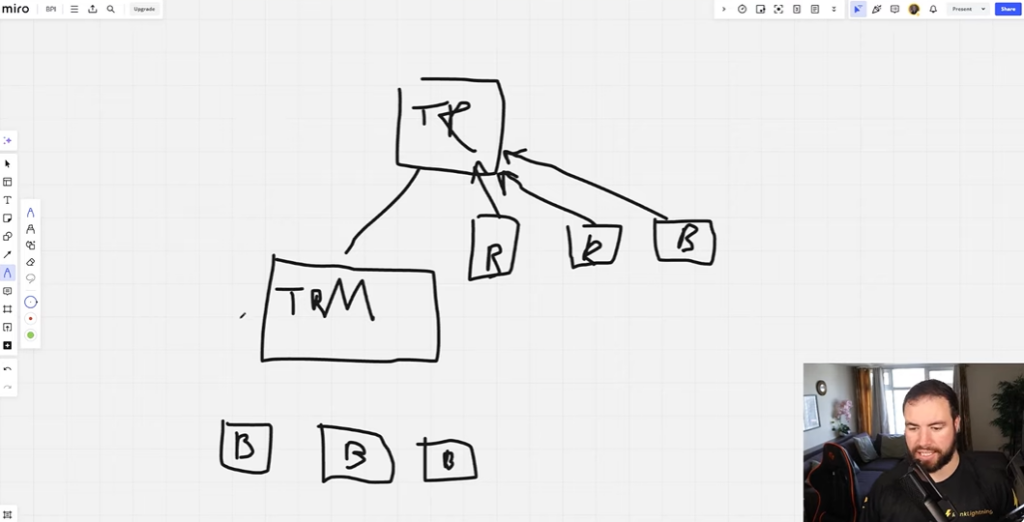
When I was first delving into the world of SEO, it felt overwhelming. So many strategies, so many ideas. One stands out: creating an effective content structure. In particular, internal linking and topical maps have changed the game for me. Let’s break this down and see how it can work for you. After all, I want to share what’s worked for me in a way that’s straightforward and easy to digest.
Best Practices For Internal Linking
So, what’s the deal with internal linking within topical maps? I believe that internal links are the roads that connect your content. They guide users - and search engines - through your website. When you create a topical map, every subtopic should interlink with your primary topic and each other. This helps establish a network of related content. It can also clarify your site’s hierarchy.
- Relevance is key. Always link to content that enhances the conversation about your main topic. For instance, if your main topic is "tree removal", linking to "tree maintenance tips" adds relevant information for the reader.
- Maintain a clear structure. Your links shouldn’t be like a maze. Aim for a clear and intuitive path. Think about how you can logically guide someone from one article to the next.
- Use keyword-rich anchor text. This is a small detail, but it packs a punch. Make sure the clickable text (anchor text) describes what's on the page it points to. This not only helps your readers but also signals search engines about the content’s relevance.
Avoiding Confusion With Clear Internal Structure
I can’t stress this enough: A clear internal structure is crucial. Imagine entering a warehouse filled with products, but everything is jumbled. Confusing, right? That’s how users feel when navigating a poorly structured site. So, here are some tips to maintain clarity:
- Use categories and tags. Organizing content into categories can help users find what they need faster. If we use "tree services" as a category, all related posts can be grouped together.
- Optimize your menu. Your main navigation menu should reflect the structure of your topical map. This makes it easier for users to locate the most important content.
- Visual cues matter. Adding breadcrumbs or using visual designs can help users know where they are within your content hierarchy.
Here’s a question: How does your internal structure look right now? If you’re feeling unsure, revisit your site’s layout. Look for areas that need improvement.
How To Visually Arrange Your Content For Optimal SEO
Next up is the visual arrangement of your content. Visuals play a huge role in how users interact with your site, and they can aid in SEO too! You might wonder, why should I care about visuals? Let me tell you - it enhances user experience, and in turn, keeps visitors on your site longer.
Consider this:
- Use headings and subheadings. Headings (like H2, H3) help structure the content so it’s skimmable. I usually break up sections with clear labels. It’s like using street signs on a road trip!
- Add images and infographics. A picture is worth a thousand words. Relevant visuals can reinforce your topic and keep readers engaged. Just remember to use alt text for SEO!
- Utilize bullet points and lists. Lists can make it easier for readers to digest information quickly. I’ve found that my audience appreciates the clarity of lists, especially when explaining processes.
As I figured out these strategies, I never looked back. Properly structuring my content with a focus on internal linking, clarity, and visual appeal has propelled my SEO efforts. Remember, it’s not just about creating content; it’s about crafting a journey for your users. When they navigate easily and find value, search engines will notice too.
Strategies For Supporting Content: Establishing Authority
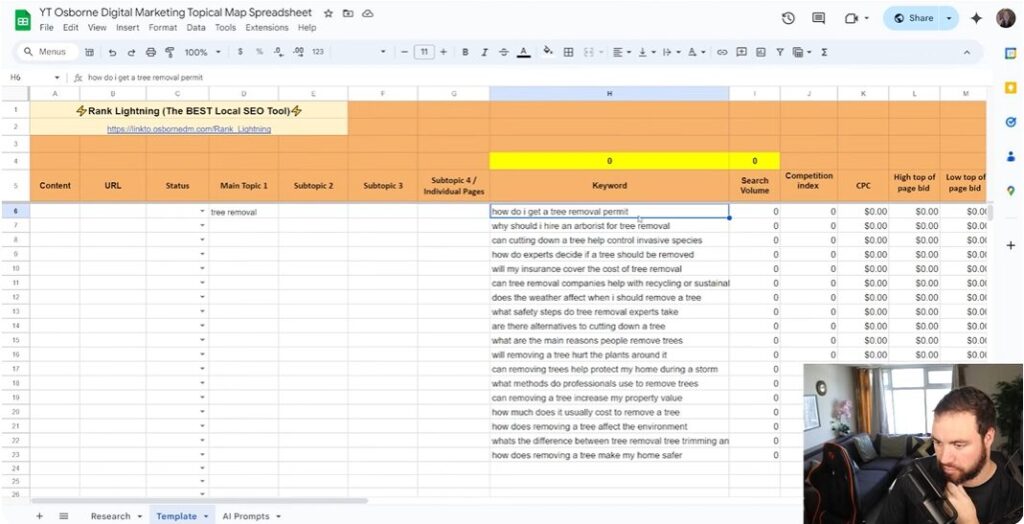
The Importance Of Blogs In Supporting Main Topics
When I think about blogs, the words support and authority come to mind. A well-structured blog can act as the foundation for your main topics. Think of it as the backbone of your website.
In today's digital landscape, most people rely on blogs to find information. They serve as a way to engage with your audience and establish yourself as an authority in your niche. Effective blogging can lead to improved website rankings, increased traffic, and, ultimately, more business inquiries.
But why are blogs so crucial? Well, they offer a unique opportunity to dive deeper into the subjects that matter to your audience. They allow you to explore topics related to your primary services, like “tree removal,” while providing valuable context and insights.
Creating Valuable And Relevant Content
Let’s face it: not all content is created equal. The key to dominating your niche lies in creating valuable and relevant content. We're talking about content that resonates with your audience. It's not enough to shove keywords into a post. You need to offer real value. But how do we do this?
- Identify Pain Points: What problems are your customers facing? If you're in tree removal, it might be safety concerns or hassle.
- Provide Solutions: Create content that addresses these pain points. Share tips, tricks, and practical advice.
- Engagement: Use questions to spark discussions. This helps you connect deeply with your audience.
As Ronald Osborne eloquently states, “An effective topical map will include everything you need to know about the subject, including subtopics.” This means exploring closely related topics can help enhance your main content significantly.
Ways To Enhance Local Authority Through Supporting Content
Local authority is something every business should strive for. It’s not just about being recognized in the online space; it’s about being trusted in your community. Here are some strategies to enhance your local authority:
- Create Localized Content: Focus on topics that specifically target your community. Write about "tree removal in Miami" or "tree care in Fort Lauderdale." This helps improve your visibility in local searches.
- Utilize Local Keywords: Research keywords and phrases people in your area use. Tools like Rank Lightning can be helpful. When you craft content that matches local interests, you begin to climb the search ranks.
- Internal Linking: As I’ve learned, effective internal linking strategies tie your blogs back to main topics and service pages. This strengthens both your SEO efforts and user experience.
But remember, it’s not about the quantity of content; it’s about the quality. Writing multiple blogs to support your main topic can significantly improve your search authority. Regularly publishing content also shows search engines that your site is active and relevant.
Establishing authority with supporting content is an ongoing journey. By creating relevant blogs and examining local concerns, we become a trusted resource for our community. I encourage you to engage, share your insights, and utilize your blogs as a vehicle for establishing your authority. Embrace the process and don’t hesitate to invest time in understanding your audience’s needs. That's where the magic happens.
How To Internally Link Topic Map Pages
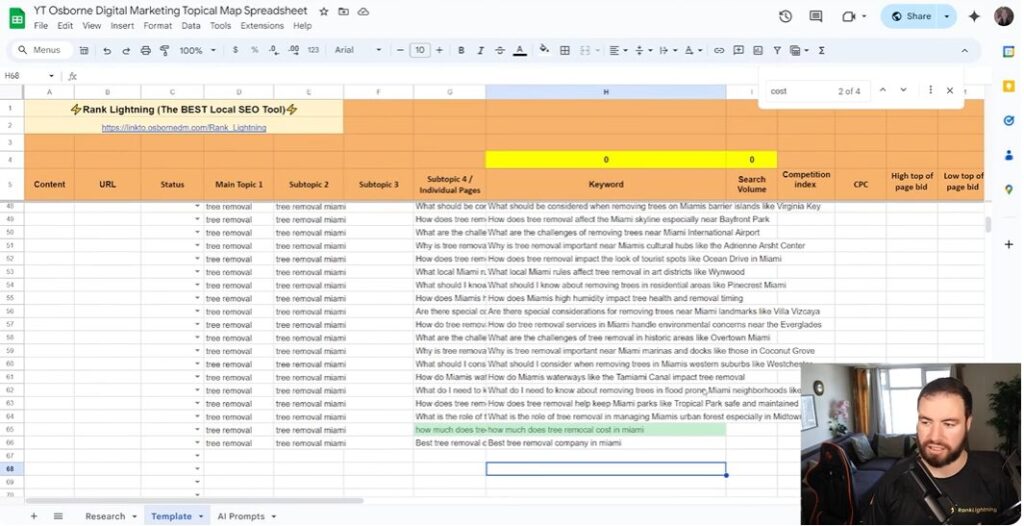
Creating an internal linking strategy for your topic map pages is crucial. It’s like connecting the dots in a picture. It is an essential part as you learn how to create a topical map for local SEO. Each dot, or page, needs to be linked so that visitors (and search engines) can easily navigate your site. In this guide, I'll show you how I approach internal linking for my topic maps, drawing from my SEO experiences and strategies.
1. Understanding Internal Linking
What exactly is internal linking? Simply put, it’s linking one page of your website to another page on the same site. This helps distribute page authority and encourages visitors to spend more time exploring. It's about creating a logical flow of information.
2. The Importance Of Internal Links
- Improved Navigation: Internal links make it easier for users to find related content. This enhances their experience, keeping them engaged longer.
- SEO Benefits: Search engines use links to crawl your site. The more internal links pointing to a page, the more likely it is to rank higher.
- Content Structure: They help in establishing a clear hierarchy for your content, which is essential for topical maps.
3. Structuring Your Topic Map
When I create a topic map, I start by identifying my main topic. For instance, if the main topic is "tree removal," I’ll break it down into subtopics and relevant geographical locations such as "tree removal Miami" and "tree removal Fort Lauderdale."
Now, how do I structure this? Think of it like a pyramid:
- Main Topic: Tree Removal
- Subtopics:
- Tree Removal for Shrubs
- Tree Removal for Palm Trees
- Geolocation Pages:
- Tree Removal Miami
- Tree Removal Fort Lauderdale
Every subtopic and geolocation page must link back to the main topic page. This creates an effective internal linking structure.
4. Creating Content That Supports Internal Linking
Having just the service pages isn’t enough. It’s essential to produce supportive content that covers various aspects of the topic. For instance, alongside "tree removal," I might write blogs like:
- The Importance of Regular Tree Maintenance
- How to Choose a Tree Removal Service
- Common Tree Diseases and Their Treatment
These blog posts should all link back to the main “tree removal” page. This not only provides context but also enhances your site’s authority.
5. Utilizing Keyword Research Tools
To write content that resonates with search intent, I often use SEO tools for keyword research. You can use tools like Ahrefs, SEMrush, or even free options like Google Keyword Planner.
After identifying relevant keywords, craft your content around them. Why? Because these keywords are what potential customers are searching for. This strategy ensures that the content you create is not just good for SEO but also valuable for your audience.
6. Keeping Everything Within Topical Silos
When working on your internal linking strategy, always remember to keep your links within topical silos. This means that links should only connect relevant topics. It avoids confusion for search engines and enhances user experience. Think of it like organizing files in a cabinet; it’s much easier to find what you need when everything is grouped logically.
7. Monitoring And Adjusting Your Links
Lastly, after implementing an internal linking strategy, I recommend monitoring its performance. Use tools like Google Analytics to track the behavior of your site visitors. Are they clicking on the internal links? Where are they spending most of their time? This information will guide you in optimizing your linking further.
Remember, SEO is a journey, not a sprint. By ensuring that your internal linking strategy is strong, you’re laying a solid foundation for your content. It may take time to see results, but stick with it. Consistency is key to effective SEO!
Monitoring Performance And Iterating Strategy

When we talk about monitoring performance in the realm of SEO, it’s crucial to understand what elements to track. A detailed approach is vital, particularly when you're working with topical maps. These structured blueprints need ongoing attention to ensure they're providing the expected results. Let’s dive into how I tackle this challenge.
Tools For Tracking SEO Performance
First, let me say that the right tools can make a world of difference. Think of them as your GPS for navigating the SEO landscape. They guide you through the often confusing terrain of data and analytics. Here are some of my go-to tools:
- Google Analytics: This is a classic choice. It provides insights into user behavior on your site, which is essential for monitoring how well your topical map content is performing.
- SEMrush: This tool helps me track keyword rankings and competition. With it, I can see how my topical map is holding up against rivals.
- Ahrefs: If link-building is part of your strategy, Ahrefs is indispensable. It tracks backlinks and shows how they contribute to your authority.
- Rank Tracker: A simple tool that keeps track of where your site stands in search engine results. I check it often to gauge the effectiveness of my efforts.
But these tools are just the start. Once I gather data, I need to analyze it. That’s where the real magic happens. How do I iterate from what I find?
Iterating Based On Analytics Insights
After tracking performance, I move to the analytics phase. I look for patterns. Is a specific subtopic exceeding expectations? Or perhaps another isn't delivering traffic at all? If I notice that “tree removal Miami” performs well but the page on “tree removal for palm trees” isn't, it’s time to act.
I’ll delve deeper. What about the good-performing pages makes users stay? Maybe it’s the length of the articles, the images used, or perhaps the internal links? I always ask myself:
- What elements can I replicate to boost underperforming pages?
- Are there new trends or keywords emerging that I could tap into?
Moreover, I’m never afraid to experiment, to try new formats, or to change the headlines. In SEO, stagnation is the enemy. By reviewing my analytics regularly, I ensure my map stays relevant and effective.
Adjusting Keyword Strategies
Adjusting keyword strategies based on performance metrics is where the rubber meets the road. Imagine trying to navigate a city without street names. That’s what working without solid keyword data feels like!
If I see that certain keywords are driving substantial traffic, I delve deeper. Perhaps I can expand those sections or create additional content based on related queries. Often, I highlight:
- High traffic, low competition: Is there a fantastic opportunity hidden in a keyword that other competitors are neglecting?
- Trends: Using tools like Google Trends helps me keep my finger on the pulse. What topics are gaining traction?
- Search intent: Understanding what users really want to know is crucial. I continually refine my keywords to align with this intent.
And here’s a key insight: performance isn’t just about monitoring. It's about adapting. As I adjust my strategies based on the metrics I observe, I’m not just keeping pace with changes; I’m often stepping ahead. This proactive approach allows me to stay relevant in the ever-evolving world of SEO.
“SEO is not a one-time task but a continuous journey of analysis and improvement.”
Each time I make adjustments, I’m reminded of the power of iteration. Platforms change, algorithms evolve, but the need for well-structured, relevant content remains constant. That's the foundation of any successful SEO approach.
The more intensely I track, analyze, and adjust, the better positioned I am to navigate the complexities of search engines and user habits. It’s a dance - one that requires attention and finesse.
Common Pitfalls And How To Avoid Them
As we learn more about how to create a topical map for local SEO, I can't help but notice some common pitfalls that many fall into when implementing topical maps. Having been there myself, I understand how daunting it can be. However, avoiding these mistakes can make a huge difference in your success. Let’s explore some key areas where many stumble and how we can circumvent these traps.
1. Mistakes To Avoid When Implementing Topical Maps
The first mistake is often neglecting research. I know research can feel tedious, but trust me, it’s crucial. Take time to identify your main topic and its subtopics. For example, if you're focusing on “tree removal,” you need to consider subtopics like “tree trimming,” or “hazardous tree removal.” Missing out on these details can cause gaps in your content.
Another major pitfall is ignoring the importance of keyword volume. If you’re tempted to create pages on topics nobody is searching for, you’re wasting your time. I’ve been there! It’s frustrating to see all that effort go unnoticed. Use tools to check the search volume on your keywords before diving in.
Lastly, a common oversight is failing to structure your topical map effectively. A chaotic structure translates into a confusing experience for both users and search engines. Instead, I recommend a hierarchical layout, starting with the primary topic and moving down to specific services and locations. This way, you maintain clarity and relevance.
2. Why Overcomplicating Can Derail Your Strategy
I often find that overcomplicating your strategy can lead to disaster. When I first began, I was tempted to include every possible subtopic without thinking critically. The result? A diluted message that did nothing for my SEO. Instead of trying to cover everything, consider focusing on a few topics that you can delve into deeply. Depth over breadth should be our mantra here.
Moreover, have you ever tried to explain something complex to a child? The key is simplicity. By overcomplicating your strategy, you risk alienating your audience. Keep it straightforward. Dive deeper into a few areas, and your audience will thank you for the clarity.
3. Emphasizing Quality Over Quantity In Content Creation
When it comes to content, I believe it’s essential to emphasize quality over quantity. Sure, churning out numerous blog posts might seem appealing at first. But they won’t do much good if they’re filled with fluff! Invest your time in producing high-quality content that provides genuine value to your readers. It’s more beneficial to create fewer, more thorough articles than to post daily with mediocre content.
One strategy I find effective is using AI tools effectively. They can be incredibly helpful in generating ideas or content, but I don’t rely solely on them for high-importance pages. You want to ensure that your content meets your standards and resonates with your audience. This is where I urge you to maintain control.
At the end of the day, the internet is flooded with content. Why would anyone stop and read yours? It’s simple: your content must stand out. Aim to provide depth, insight, and unique perspectives. This will not only aid in ranking but also in forging a connection with your audience.
In conclusion, by avoiding common mistakes, simplifying our strategies, and focusing on the quality of our content, we can build a more effective topical map. It's not just about putting information out there - it's about creating a valuable resource that people will want to engage with. Remember, SEO is a marathon, not a sprint. With persistence and a clear focus, we can achieve substantial success in our endeavors.
If you have any further questions or are looking for additional insights, feel free to drop a comment below! I’m here to help.
